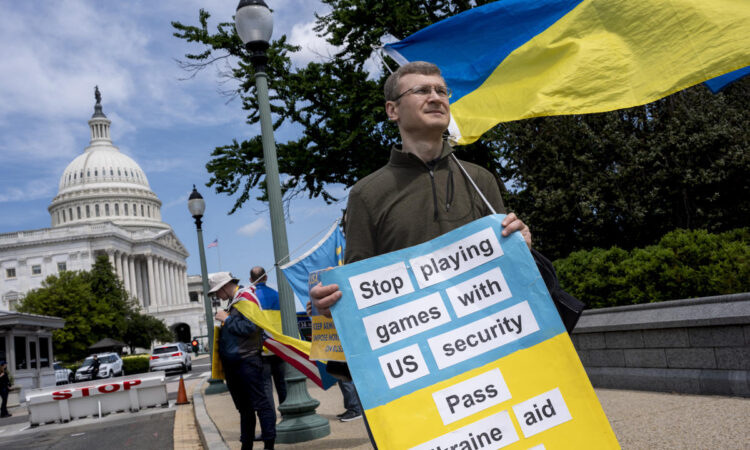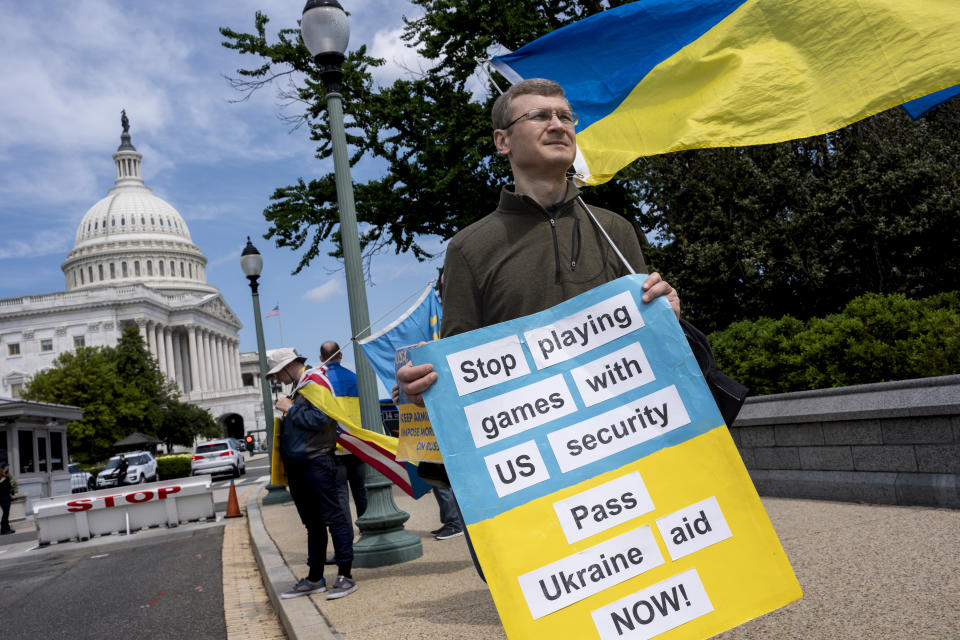
Drop the sports metaphors. One thing we should know more than two years after Russia invaded Ukraine is that the entrenched war is not likely to end like a baseball or basketball game, with one winner and one loser. Nor is a tie likely, with each side getting credit for half a win and heading home.
Instead, there’s a matrix of possible outcomes and an unpredictable timetable that will probably frustrate anybody hoping for a decisive ending. All of this should temper expectations now that the United States is finally providing another tranche of aid Ukraine desperately needs to keep Russia from overrunning its territory. But it also underscores that US aid to Ukraine is money well spent — and there’s likely to be a need for more.
It took six torturous months, but on April 20 Republicans who control the House of Representatives finally overcame an obstructionist rebellion to pass $61 billion in additional aid for Ukraine, with bipartisan support. With that hurdle cleared, the Senate quickly passed the bill, and President Biden signed it. US and Ukrainian officials stress the urgency of rushing artillery shells, armor, air defense missiles, and other weaponry to outgunned Ukrainian troops who have been losing ground to Russian forces this year.
There’s a good chance the inflow of weapons will soon allow Ukraine to stop Russian advances and stabilize the front lines. But the six-month funding impasse has also highlighted deep flaws in Washington’s approach to containing Russia and better ways to proceed in the future. Here are six important lessons we’ve learned more than two years into the war.
The US goal isn’t necessarily a Ukrainian “victory.” Critics of ongoing US aid argue that no amount of assistance short of direct NATO intervention will oust Russian troops from the 20% of Ukraine they already control. So why bother? Ukraine’s ardent backers say the right set of potent Western weapons could allow Ukraine to wreck Russia’s battlefield supply chains and end the whole military campaign. What’s missing from both arguments is a clear statement of the overarching US interest in checking Russian power.
Frederick Kagan of the Institute for the Study of War argued recently that if the United States and Europe don’t stop Russia in eastern Ukraine, Russian President Vladimir Putin will push his forces into western Ukraine and then threaten Baltic nations and other eastern European countries that are members of the NATO military alliance. Putin has made clear that he wants to reassemble elements of the old Soviet Union and, before that, imperialist Russia. That’s why he invaded Ukraine in the first place.
Some Americans may wonder why they should care about the fate of Eastern European nations such as Latvia, Lithuania, Estonia, Moldova, Slovakia, Romania, or Hungary. In the most crass terms, they should care because a territory-grabbing dictator such as Putin won’t stop until somebody forces him to. The invasion of Ukraine in 2022 hit Americans directly by sending oil prices soaring to $120 per barrel and US gasoline to $5 per gallon. The further Putin goes or tries to go, the more it will cost to stop him, and the price at some point would include US troops as well as multiples of the money we’re spending now. Stopping Putin sooner will be far cheaper than stopping him later.
It’s still possible Ukraine could eject Russian forces from its territory, over time. But an indefinite “stalemate,” while bitter for Ukraine to stomach, would still benefit the United States by draining Putin’s military, political, and economic power into a quagmire that prevents him from marauding deeper into Europe.

Biden should update his rationale for supporting Ukraine. Biden’s catchphrase on Ukraine has been to “stand for liberty and freedom for as long as it takes.” Eh. That felt OK during the early stages of the war when Ukraine’s gutsy blunting of the Russian invasion inspired a surge of Western solidarity. But petty American politics have now proven Biden wrong. Putin has been strangling liberty and freedom for the last six months while American legislators have been bickering. It’s clearly possible Putin’s resolve could outlast Western support for Ukraine, exactly as Putin intends.
Drop Rick Newman a note, follow him on Twitter, or sign up for his newsletter.
Instead of characterizing it as “the right thing to do,” Biden could spell out more clearly and coldly why it’s worth sending US weapons — rather than US troops — to the biggest conflagration in Europe since World War II. Remind people that Putin has tried to use energy as a weapon and is likely to do it again. Maybe point out that the United States tried to sit out the last two world wars and ended up with 520,000 dead. Money is cheap compared with lives.
Miracle breakthroughs are unlikely. The much-hyped Ukrainian counteroffensive fizzled in 2023 for a number of reasons. A big one is that the United States and Europe drip-fed Ukraine advanced weapons, allowing Russia months to build stout defenses that turned out to be very effective. Even now, Ukraine fights without the sort of airpower that’s a staple of NATO military doctrine. Inflated expectations contributed to a sense that Ukraine failed in 2023, which is not what happened at all. Ukraine inflicted massive damage on the Russian army. It sank several Russian ships and effectively drove back Russia’s Black Sea fleet without a single warship of its own. Ukraine has pioneered attack-drone technology that many other nations are rushing to adopt.
Reasonable expectations are crucial now. The fragility of Western support may even demand that the United States and its allies begin to send Ukraine the advanced weapons that could turn the tide quickly. But it is better to keep the public focused on containing Russia and consistently degrading its warmaking capability.
Helping Ukraine improves the US arsenal. Most of the weaponry the United States is sending Ukraine is older materiel the Pentagon is essentially clearing out, enabling it to upgrade its own stockpiles. “These equipment transfers to Ukraine have not only allowed the US to cripple the Russian military at the cost of three percent of our defense budget,” Mackenzie Eaglen of the American Enterprise Institute wrote on April 22, “but they have also provided an opportunity for the Pentagon to modernize the Army’s aging arsenal.” No Republican opposing Ukraine aid can claim to be a defense hawk.
“America first” is a canard. Some Republicans object to aid for Ukraine while problems at home go unaddressed, including a dilapidated immigration system allowing record migrant crossings at the southwest border. But everybody in Washington knows the government can do many things at once, and there’s no either-or trade-off. Congress could pass immigration fixes at any time and simply chooses not to for reasons having nothing to do with Ukraine.
More aid is going to be needed. In an April 23 research note, Tobin Marcus of Wolfe Research explained that “looking ahead to 2025, the trajectory of the conflict depends on the continued availability of US aid.” That makes this year’s US presidential election a matter of existential importance for Ukraine. If Biden wins reelection, more aid is likely, and it might be easier to get through Congress than the latest batch. If Biden wins, there’s a good chance Democrats will take control of the House, neutering the veto power of the right-wing cabal that held up Ukraine aid for the last six months. Republicans could gain control of the Senate, but support for Ukraine there is bipartisan, without the blocking mechanism that has plagued the House.
If former President Donald Trump wins, that could be the end of American aid for Ukraine. Trump has said, with his usual hyperbole, that he’ll end the war in a day, which can only mean he’d agree to some sort of capitulation to Putin. Ukraine would probably fight on with European aid and whatever else it could muster, but a Trump win in the United States could be Putin’s best chance in Ukraine. Even so, whatever damage Ukraine does to Russian forces for the rest of 2024 will delay and blunt the impact of anything Putin may have planned for afterward.
Rick Newman is a senior columnist for Yahoo Finance. Follow him on Twitter at @rickjnewman.
Read the latest financial and business news from Yahoo Finance






